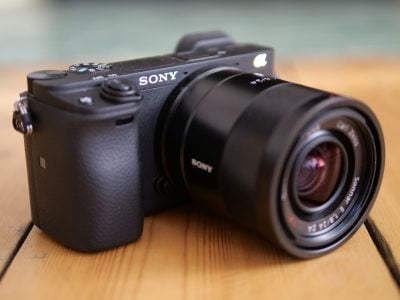Sony A6400 review
-
-
Written by Gordon Laing
Intro
The Sony A6400 is a mid-range mirrorless camera with a 24 Megapixel APSC sensor, 4k video, powerful autofocus tracking, a built-in viewfinder and touchscreen that flips-up by 180 degrees to face the subject. Announced in January 2019, it’s the official successor to the A6300 but as you’ll discover, it could be more tempting than the pricier A6500 depending on your needs.
The A6400 shares essentially the same body as the A6300 with the same viewfinder, controls, battery, single card slot and shutter mechanism. Uniquely in the A6000 series though, it features a new screen mechanism which allows the panel to tilt out from the body and angle up all the way to face-forward, a little like the most recent RX100 models. There’s also a hotshoe onto which you could mount an external microphone, although it would of course block the screen, forcing vloggers to use a wired lav or a bracket accessory to mount external mics to the side.
The sensor is inherited from the A6300 and A6500, equipping the A6400 with a broad array of embedded phase-detect autofocus points, along with 11fps burst shooting with continuous AF (or 8fps with better feedback). Sadly the A6400 lacks the built-in stabilisation of the A6500, but it does feature Sony’s latest autofocus technology with better tracking and now eye-detection for animals. Completing the picture are an XGA OLED viewfinder, 4k video at 24, 25 or 30p (uncropped at 24 or 25p), 1080 up to 60p uncropped or at 120p with a crop, support for S-Log 2, and 3 as well as Hybrid Log Gamma for in-camera HDR, silent shooting options, Wifi and Bluetooth, USB power and an interval timer facility – albeit with external software supplied to assemble photos into a timelapse movie.
I’ve fully tested a final production sample and will show you everything you need to know about the A6400 in the following video. If you’re looking for my quality results or sample images, skip to those pages using the tabs above, or jump straight to my verdict if you prefer!
Check prices on the Sony Alpha a6400 at Amazon, B&H, Adorama, or Wex. Alternatively get yourself a copy of my In Camera book or treat me to a coffee! Thanks!
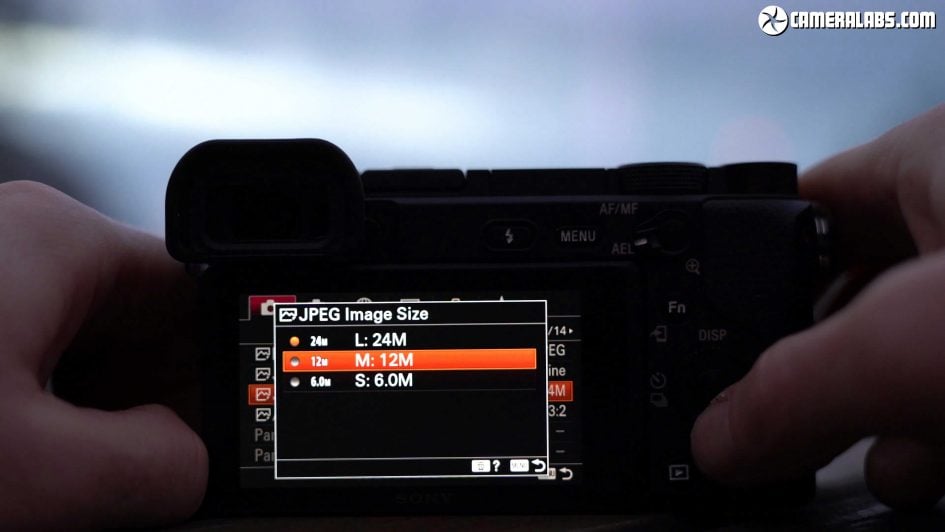
Above: I’ll start with the sensor, a 24 Megapixel APSC part inherited from the A6300 and A6500. This means it also inherits a hybrid AF system for confident focusing across the frame, although now coupled with Sony’s latest algorithms.
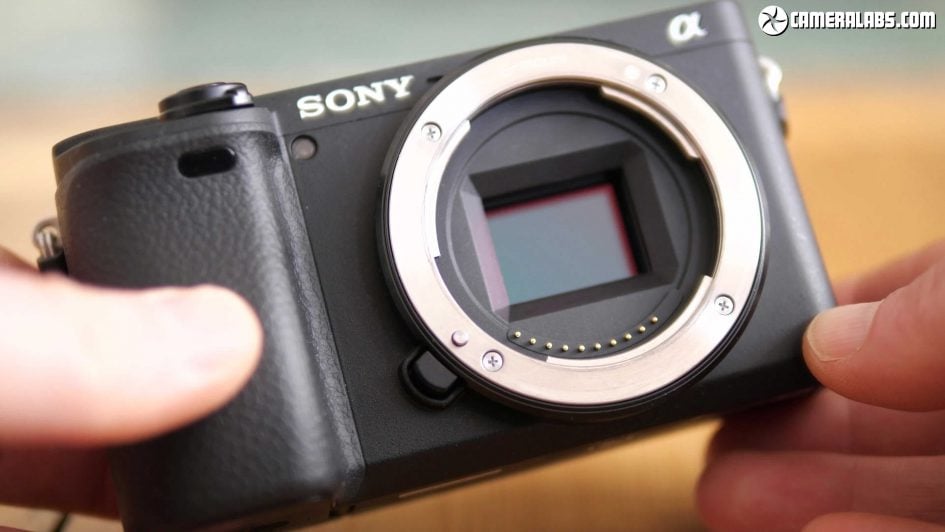
Above: Sadly the A6400 does not offer built-in stabilisation, leaving this as a unique advantage of the A6500 in Sony’s APSC range, at least for now. I’m frustrated by this as I like to use primes which often don’t have stabilisation, but equally it’s allowed the A6400 to hit a lower price-point than the A6500.
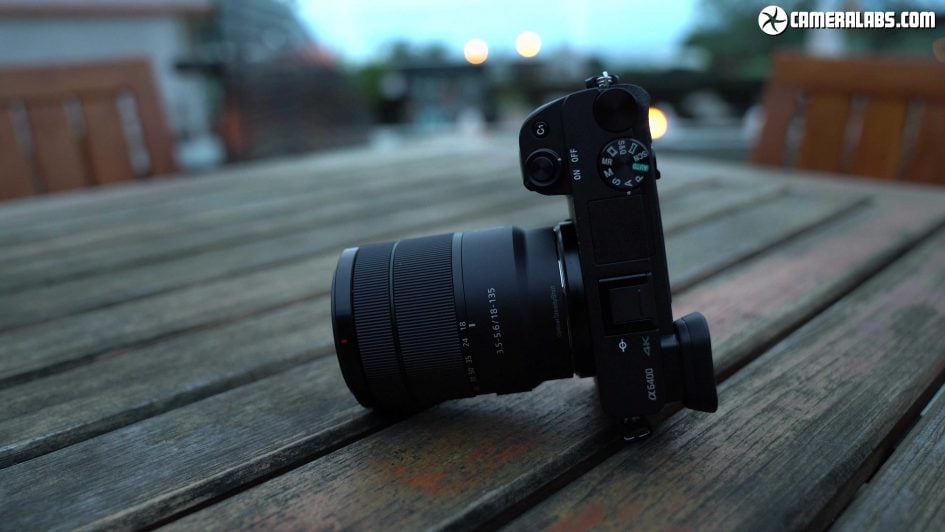
Above: The body will also look familiar – it’s based on the A6300 and I’m told it has the same degree of weather-sealing as that and the A6500. There’s the shutter release and power collar, joined by one custom button vs 2 on the A6500, the main mode dial and the first of two control dials. Round the back you’ll find a thumb wheel and the second custom button. So far so similar to the A6300
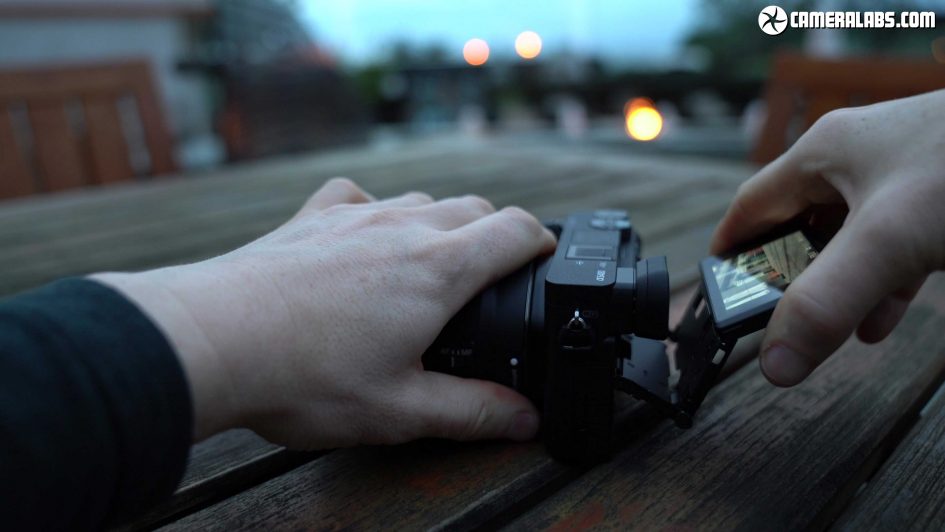
Above: But there’s one major difference – a new screen mechanism which after flipping up by 90 degrees can be pulled outwards, then flipped a further 90 degrees in order to clear the viewfinder housing and face-forward. It’s slightly awkward, but for the first time in the A6000 series, allows you to see yourself for vlogging or selfies.
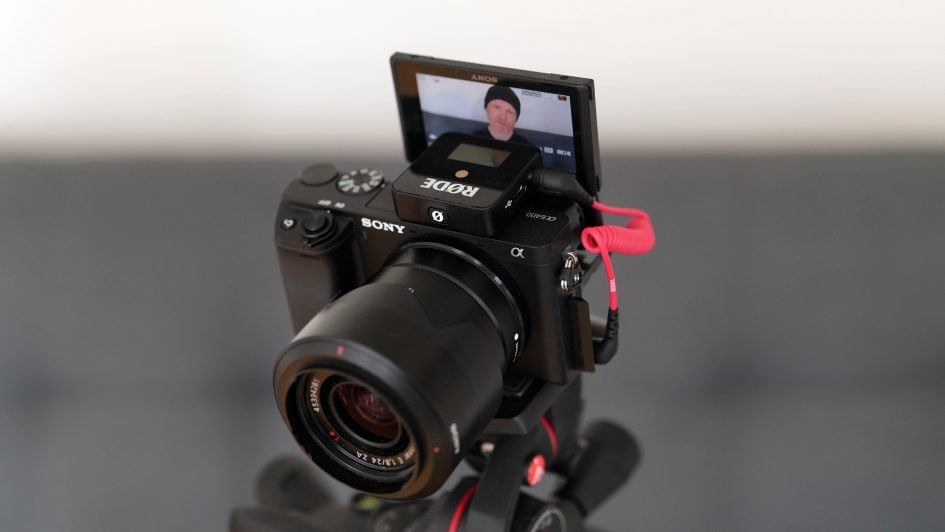
Above: There is however one major catch: if you mount an accessory on the hotshoe, like an external microphone, then you’ll block the screen. Here you can see even the small receiver unit of the Rode Wireless Go is blocking some of the screen. The solution is to either mount a mic on a bracket to the side or connect a cabled mic like a lavalier. I’d have preferred the flexibility of a side-hinged screen, but in its defense, Sony’s solution remains central to the optical axis and is also quicker to angle-up for a discreet shot. There’s pros and cons to both approaches.
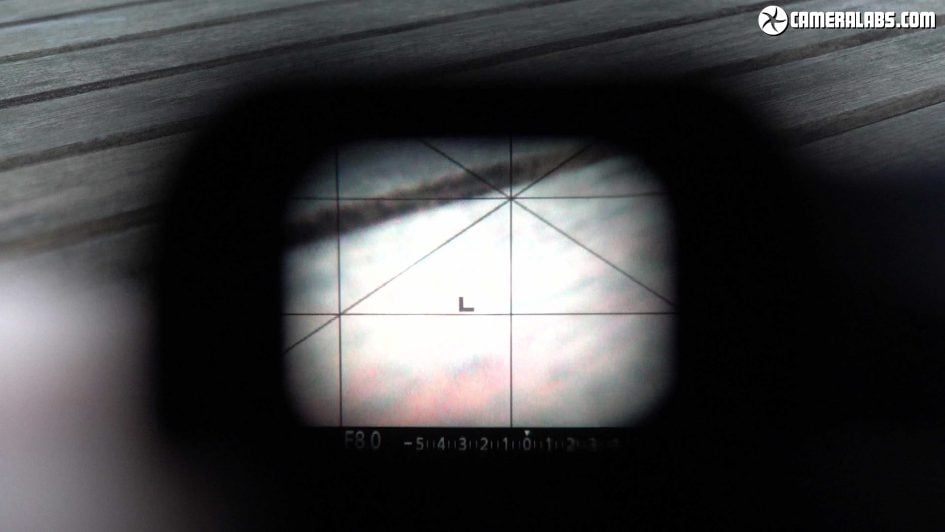
Above: If you prefer to compose at eye-level, there’s a built-in electronic viewfinder, inherited from the A6300 and A6500 with an XGA OLED panel – par for the course at this level. As I mentioned earlier, you can use the touchscreen to adjust the AF area when composing with the viewfinder.
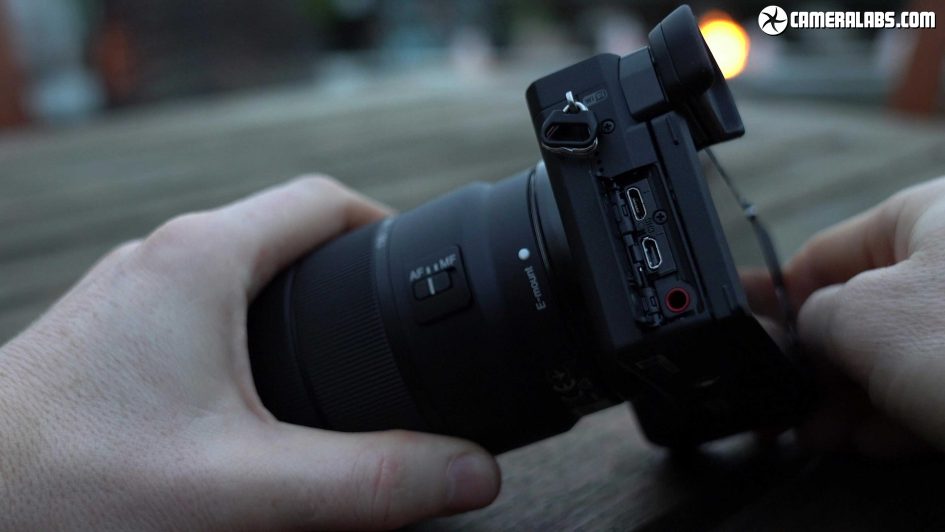
Above: With the same body as the A6300, it’s not surprising to find the same ports too: Micro HDMI with 4k output, Micro USB which can be used for charging and powering the camera as well as data transfer, and a 3.5mm microphone input, although again remember if you mount a microphone on the hotshoe, you’ll block the screen from facing you. Like most cameras at this price, there’s no headphone jack, but it would still have been nice to have one.
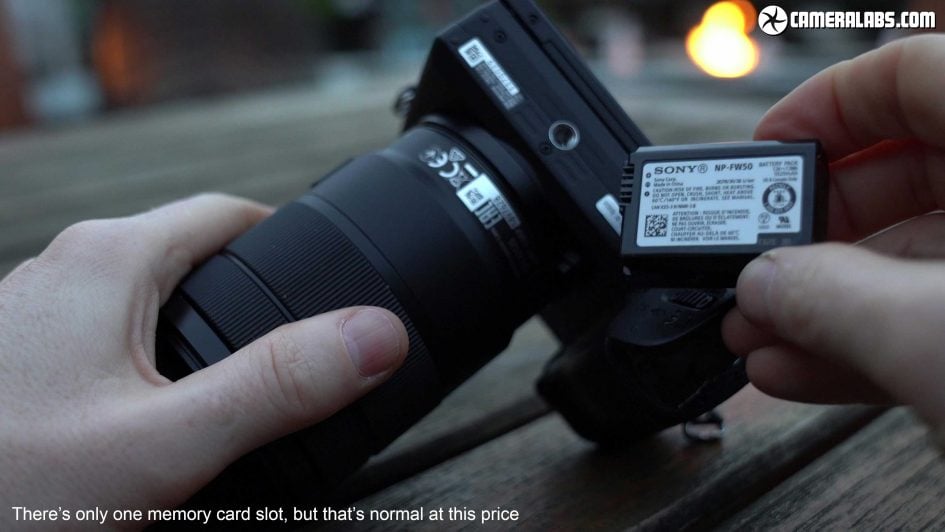
Above: No surprises to find the same battery pack as the previous A6000 models either, the venerable NP-FW50, quoted for around 400 photos or 70 minutes worth of video. In practice I managed closer to 200 photos with a few minutes of 4k video on a single charge – that’s below average nowadays and I wish they’d deploy a new battery on the APSC models, but remember Sony supports the fairly unique ability to actually run the camera from a USB source like a powerbank and I’ll show an example of that later.
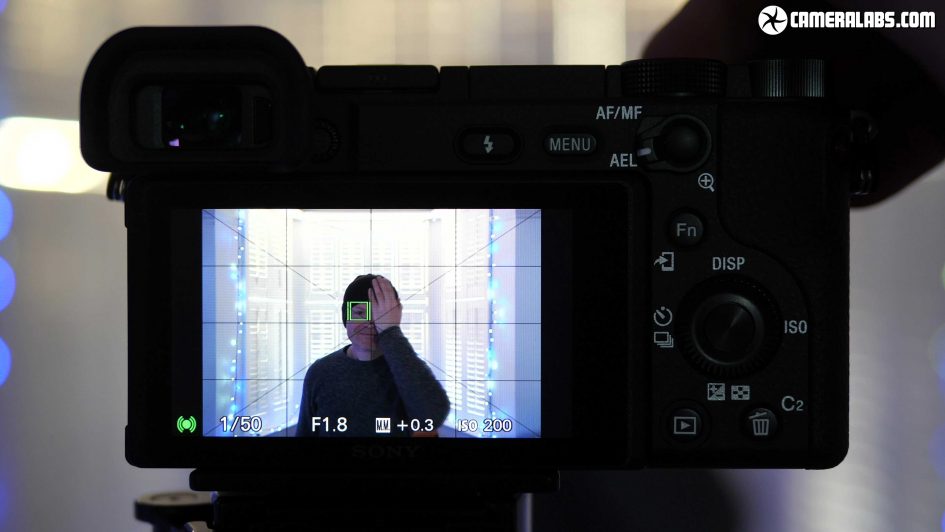
Above: Moving onto autofocus, the A6400 debuts Sony’s latest tracking system with realtime eye-AF. With the shutter half-pressed, the camera can now exploit eye-detection with continuous autofocus, something which previously required you to hold another button down and it’s stickier than ever even from a distance. If the camera loses the eye, it falls back to face-detection, then back to normal object tracking before picking them up again quickly and seamlessly. The new tracking mode replaces the Lock-on AF modes on previous models and works brilliantly. The A6400 will also support Sony’s new animal eye-detection with a firmware update but this wasn’t ready when I tested it.
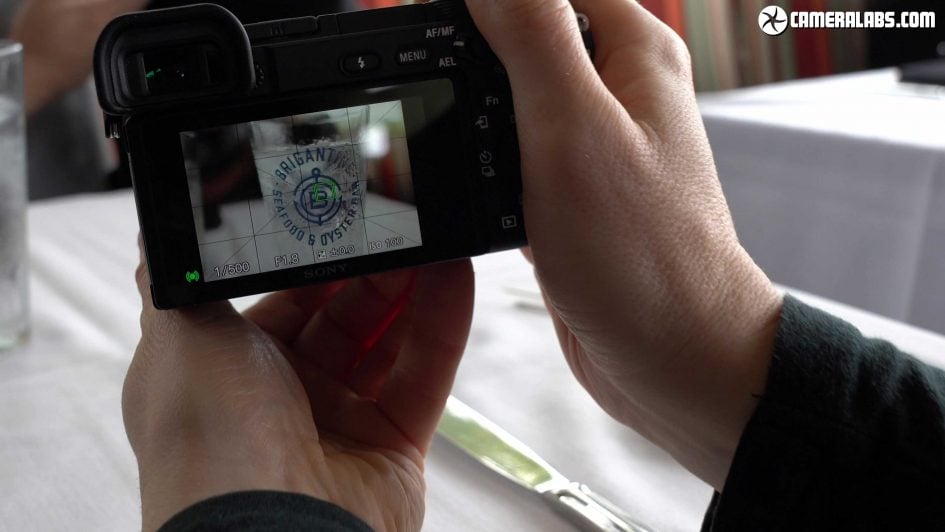
Above: Here’s the tracking system again, locked-onto the logo on the glass and see how easily it follows it across the frame even when moving back and forth. Apart from Sony’s own A9, it’s the best tracking I’ve tested, although in low light it can struggle with the kit zoom, so for the best results try and couple it with faster lenses.
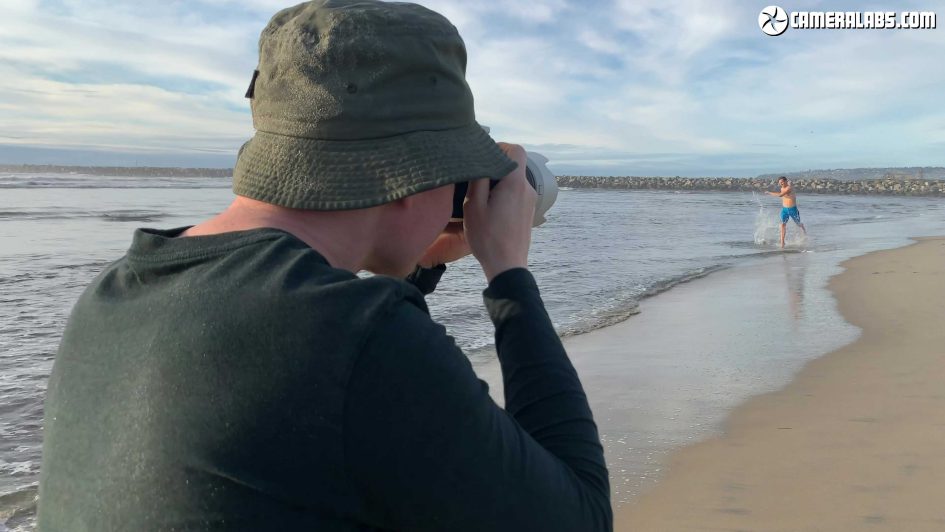
Above: In terms of bursts, the A6400 can shoot at up to 8fps with live-ish feedback or 11fps with slightly delayed feedback. The top speed is greatly dependent on the AF mode, lens and subject though. I managed a burst of 114 JPEGs in 10.32 seconds which works out a top speed of 11fps but that was in AFS mode. With continuous AF I typically achieved between 5 and 8fps, but that’s still good enough to capture most action.
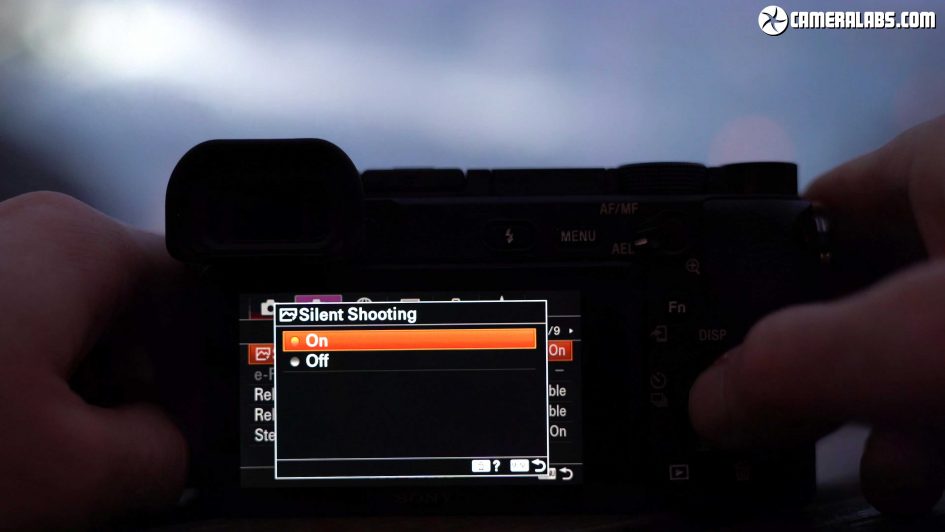
Above: Like the A6300 and A6500 before it, the A6400 offers a silent mode which employs an electronic shutter to operate in complete silence. This is great for times when you need to be discreet, but like most electronic shutters there can be skewing if the subject moves quickly or you’re panning.
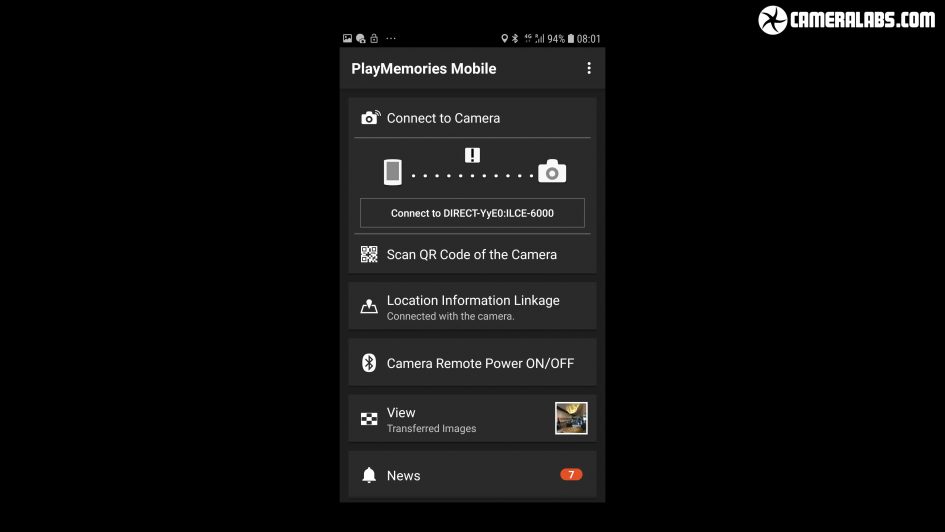
Above: In an upgrade over the A6300, the A6400 gains the Bluetooth capabilities of the A6500 which allow it to maintain a low-power connection with your phone and seamlessly embed location co-ordinates if you like. Meanwhile Wifi and NFC remain available for copying images or wireless remote control.
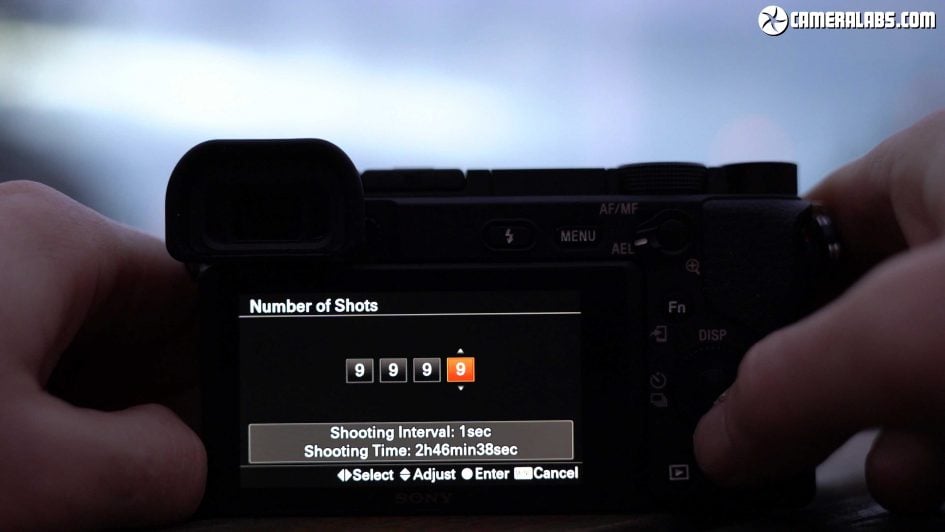
Above: After abandoning downloadable apps, Sony’s recent cameras have frustratingly lacked interval timer facilities, but I’m delighted to report the A6400 is the first new model to feature the capability built-into the menus as standard. Now you can set the A6400 to record frames at preset intervals and while it won’t generate a movie in-camera, it can provide a rough preview in playback and Sony also supplies desktop software for assembly. The interval timer should also come to the A9, A7 III and A7r III with a firmware update, but no news on older models yet.
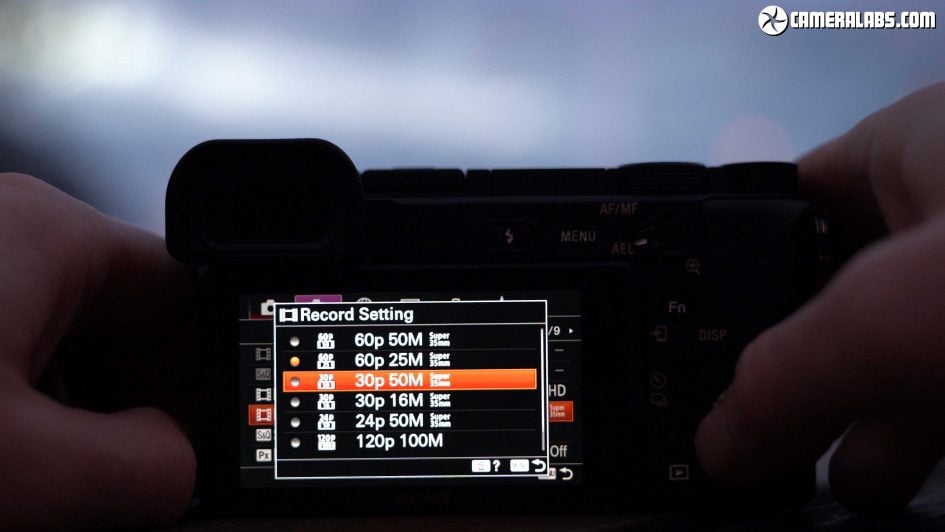
Above: Moving onto video, the A6400 can film 1080 up to 60p without a crop, or up to 120p with a crop, the latter impressively still recording sound and offering continuous AF if you like. It’ll also film 4k in 24 or 25p uncropped, or at 30p with a crop.
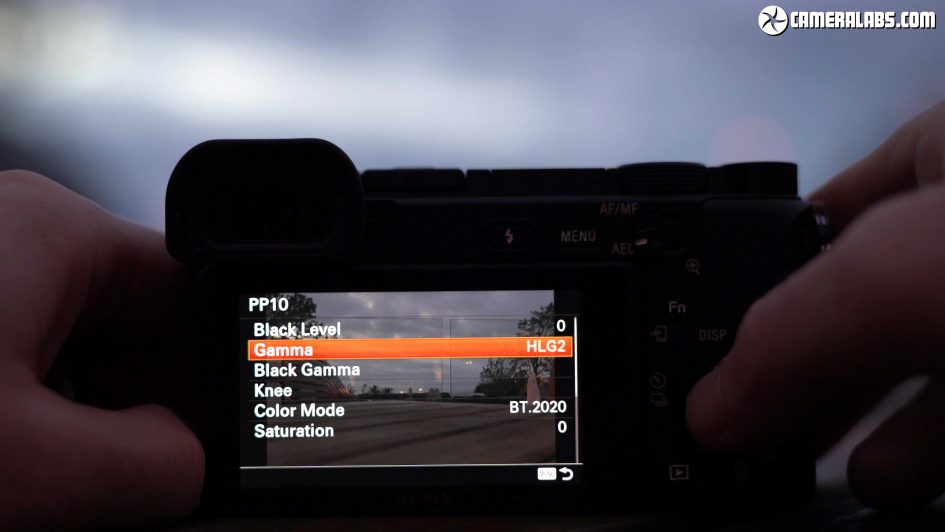
Above: If you’re into grading, you’ll be pleased to find S-log 2 and 3 in the picture profiles and new to the A6400, the addition of Hybrid Log Gamma for in-camera HDR.
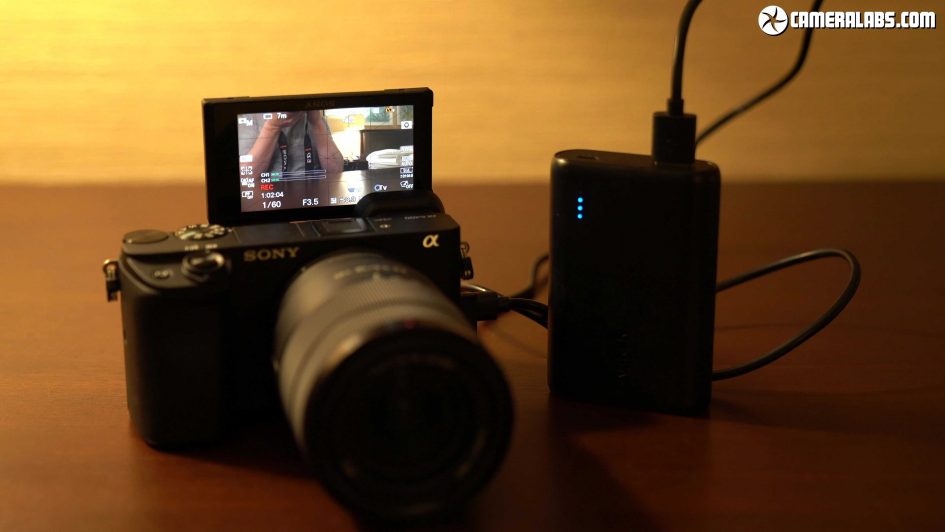
Above: As I mentioned earlier, Sony is one of the few companies that can actually run their cameras from a USB source, like I’m doing here with a small powerbank. This is allowing me to film a long clip in 4k even though the internal battery started with just 5%.
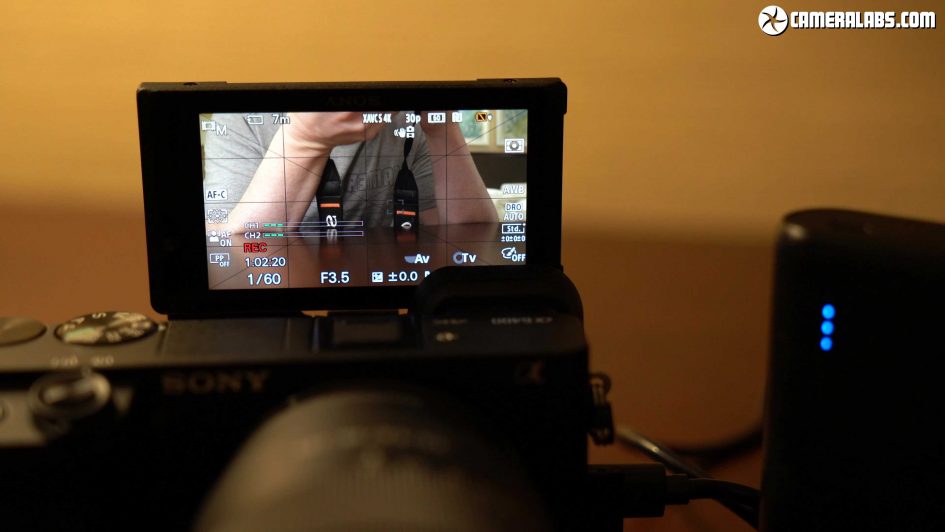
Above: But look at that recording time in the corner of the screen – the A6400 joins an exclusive club of cameras that can film beyond the usual half hour limit. I managed just over an hour of 4k 30p at 60Mbit on a 64GB card without overheating. Impressive stuff for events or interviews.
Check prices on the Sony Alpha a6400 at Amazon, B&H, Adorama, or Wex. Alternatively get yourself a copy of my In Camera book or treat me to a coffee! Thanks!
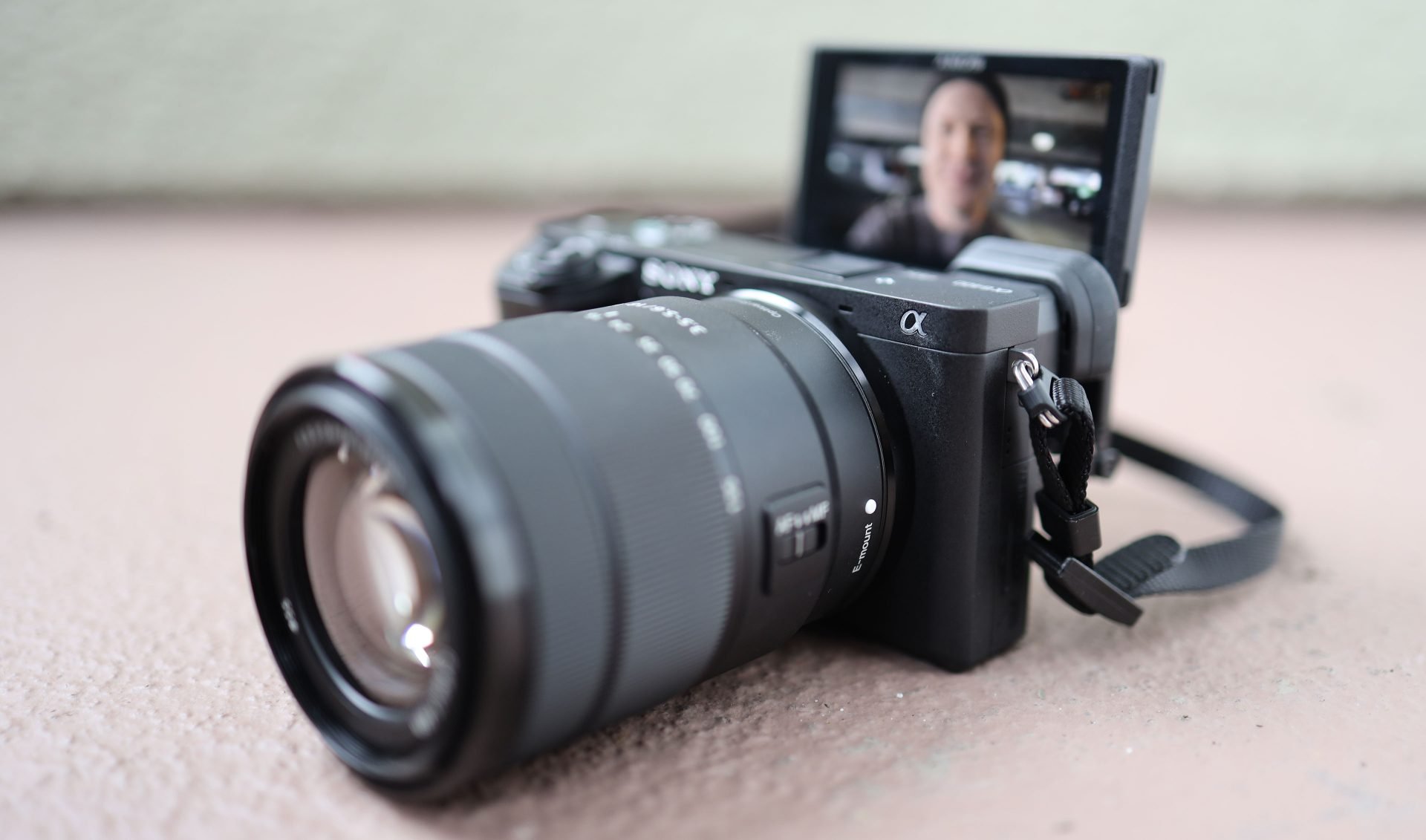
 Sony’s A6400 is a solid mid-range mirrorless camera with an APSC sensor delivering good quality 24 Megapixel photos and 4k video. Improvements to the autofocus system mean it’ll track and stay focused on subjects more successfully than any camera at its price point whether you’re shooting stills or filming video, and fast burst speeds mean it’s also better-suited to action than most rivals too. The screen can finally flip-up by 180 degrees to face you for vlogging, and the rare ability to keep filming beyond half an hour makes it ideal for interviews and events. Frustratingly if you fit a microphone to the hotshoe, you’ll block the screen, but you could always use a bracket or a cabled microphone instead, and while there’s no headphone jack or dual card slots, that’s normal at this price. I’d have liked to see a better battery, but you can at least power the camera over USB which is useful for long videos or time-lapses which have also been reinstated after the loss of downloadable apps. Arguably the biggest downside is the lack of built-in stabilisation which remains exclusive to the A6500 in Sony’s APSC range - annoying since it’s long been standard across Sony’s full-frame line. If you do need IBIS, perhaps for unstabilised primes, then the A6500 is still tempting even at a higher price, but I personally prefer the A6400 for its improved focusing, longer recordings and selfie-screen even with the hotshoe limitations. Since the previous A6500 followed the A6300 by only 8 months though, It does beg the question whether there’ll be a stabilised version of the A6400 in the future, although presumably at a premium you may not be willing to pay. Plus if you don’t need the A6400’s upgrades, look out for discounted A6300s, and if you don’t need 4k or fast bursts, Canon’s EOS M50 remains a great option for vloggers with a side-hinged screen and lower price. But personally speaking, the A6400 fits very well with my style of filming and lack of IBIS aside, it’s a strong camera at the price point I’m happy to recommend.
Sony’s A6400 is a solid mid-range mirrorless camera with an APSC sensor delivering good quality 24 Megapixel photos and 4k video. Improvements to the autofocus system mean it’ll track and stay focused on subjects more successfully than any camera at its price point whether you’re shooting stills or filming video, and fast burst speeds mean it’s also better-suited to action than most rivals too. The screen can finally flip-up by 180 degrees to face you for vlogging, and the rare ability to keep filming beyond half an hour makes it ideal for interviews and events. Frustratingly if you fit a microphone to the hotshoe, you’ll block the screen, but you could always use a bracket or a cabled microphone instead, and while there’s no headphone jack or dual card slots, that’s normal at this price. I’d have liked to see a better battery, but you can at least power the camera over USB which is useful for long videos or time-lapses which have also been reinstated after the loss of downloadable apps. Arguably the biggest downside is the lack of built-in stabilisation which remains exclusive to the A6500 in Sony’s APSC range - annoying since it’s long been standard across Sony’s full-frame line. If you do need IBIS, perhaps for unstabilised primes, then the A6500 is still tempting even at a higher price, but I personally prefer the A6400 for its improved focusing, longer recordings and selfie-screen even with the hotshoe limitations. Since the previous A6500 followed the A6300 by only 8 months though, It does beg the question whether there’ll be a stabilised version of the A6400 in the future, although presumably at a premium you may not be willing to pay. Plus if you don’t need the A6400’s upgrades, look out for discounted A6300s, and if you don’t need 4k or fast bursts, Canon’s EOS M50 remains a great option for vloggers with a side-hinged screen and lower price. But personally speaking, the A6400 fits very well with my style of filming and lack of IBIS aside, it’s a strong camera at the price point I’m happy to recommend.



